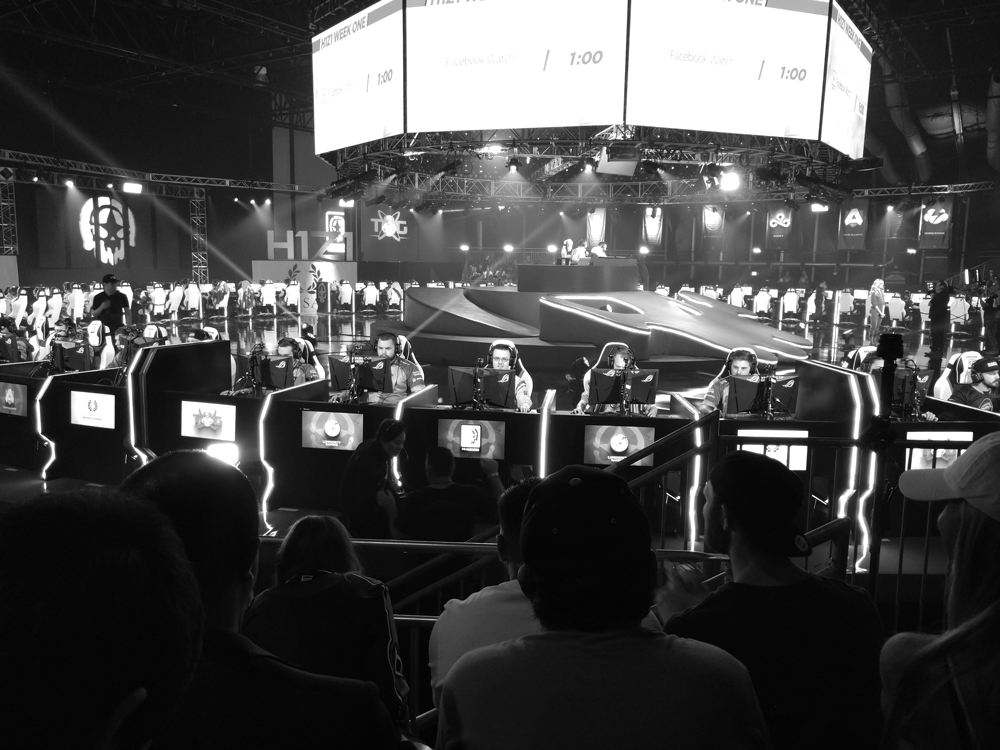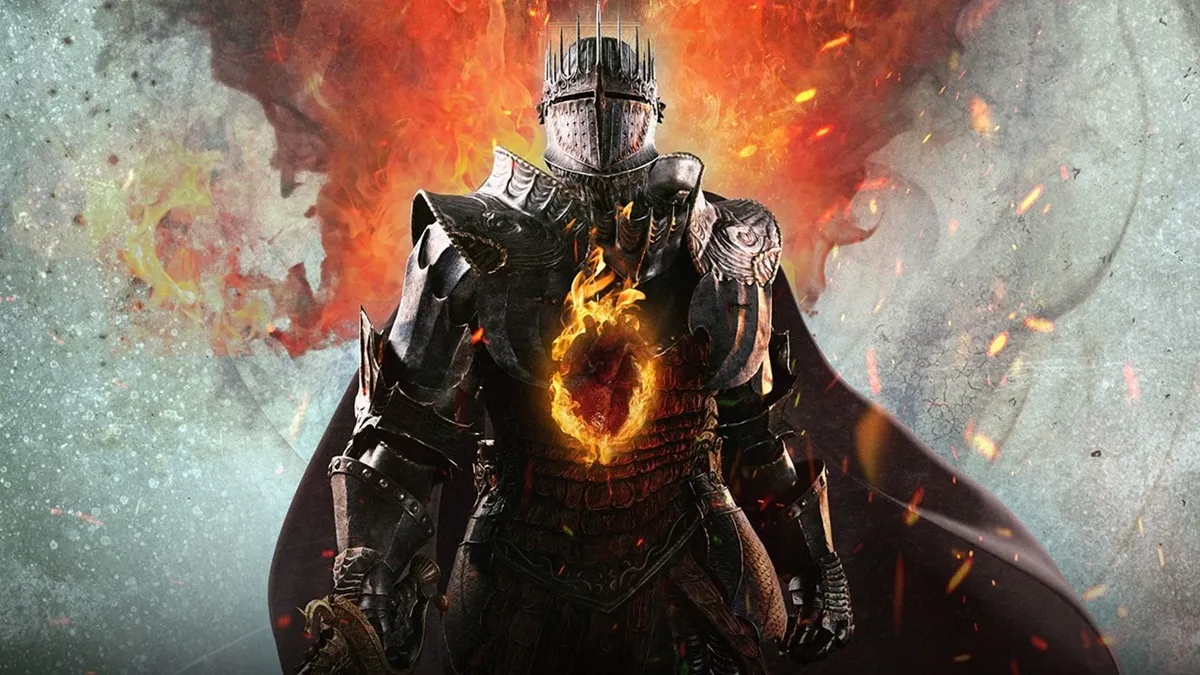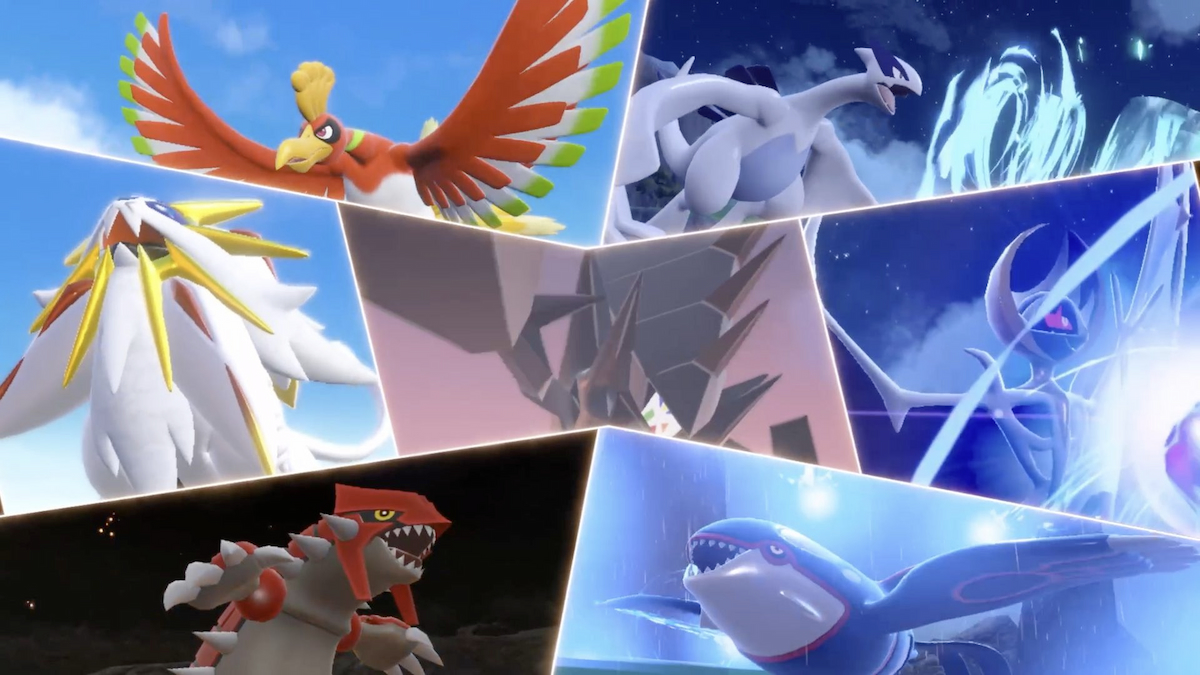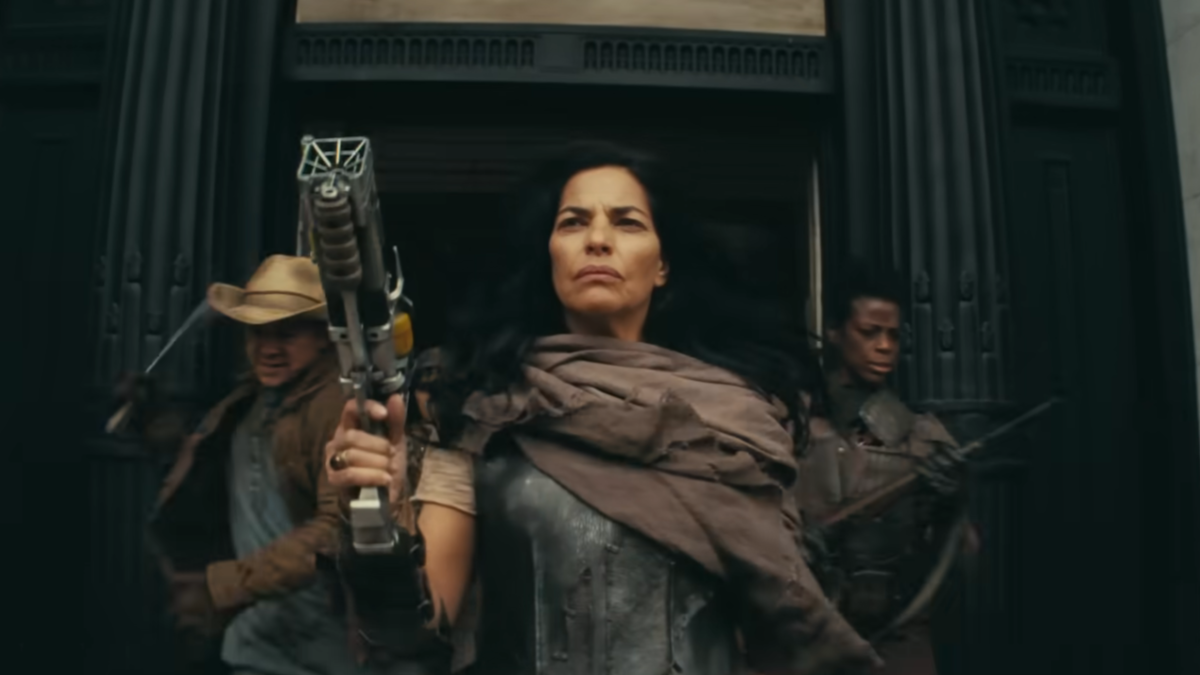A look at the H1Z1 Pro League
Caesar’s Entertainment Studios in Las Vegas hides in plain sight. Just off the main strip where the entire human history of excess and wealth, from the orgies of ancient Rome to the Wall Street decadence of New York City, are recreated and celebrated by throngs of thong-footed tourists, it stands a simple building. Among the liquor stores and chain motels I’m sure have the saddest little slot machines in the lobby, this warehouse is ground zero for what Caesars, Twin Galaxies, Facebook, and 3-Time NBA champion Rick Fox are hoping will be the next great thing in esports: the H1Z1 Pro League.
“I strongly believe battle royale is the next biggest gaming genre by far. We’ve seen all these different, wonderful takes on the genre, and that’s exciting, but H1Z1, at the moment, is really the most digestible, easily understandable expression of the battle royal genre and I think it can continue to lead the growth of the entire industry. H1Z1 was effectively first and now it’s effectively first with the Pro League.”
Those are the words of Jace Hall, owner of Twin Galaxies and the H1PL [H1Z1 Pro League] spokesperson for the inaugural weekend. Hall is no stranger to the industry. Before buying Twin Galaxies he served as the general manager of Warner Bros. Interactive Entertainment, started his own video game talk show with The Jace Hall Show, produced 800 episodes of Hulu’s The Morning After, and released a rap album titled Video Games Aren’t Bad for You.
Hall purchased Twin Galaxies in 2014. What originally started as a way to track video game world records is morphing into something entirely new. The H1PL is set to be the first of what could be many pro-gaming leagues run by Hall and Twin Galaxies. There are obvious plans for more. He’s already in contact with other publishers and developers, eyeing something far larger than the foundation the H1PL will set. But can you effectively build an esports league on the back of a game nobody cares about?

H1Z1 had a shaky start when it first hit Early Access three years ago but showed enough promise for players to sell more than a million copies rather quickly. After some shakeups with the development, the battle royale portion of the game, simply titled H1Z1, exited Early Access in February, just a few months after Hall announced the Pro League. It also went free-to-play, the only sane move the company could make in a time where every new battle royale hitting the market doesn’t cost a dime.
But in the years leading up to its official release, its name has fallen by the wayside. PlayerUnknown’s Battlegrounds and Fortnite especially have taken over industry chatter, paving the way for mainstream acceptance of the genre. In terms of viewers online, H1Z1 doesn’t even register. Saturday afternoon, as I enjoy some delicious, catered wraps, I peek over at Twitch to compare streaming numbers. Fortnite sits easily in first with 149,000 viewers. PUBG follows a distant second with 85,000. H1Z1? A measly 1,000.
The game is attempting to claw its way back into the limelight. It recently announced a PlayStation 4 port set to launch next month and all eyes are on the H1PL to give the game the widespread exposure it needs to maintain its place in an increasingly saturated field. An expanded player base is what developer Daybreak Game Company is hoping to see come out of this. For Hall, his sights are set on something different.
“Our goal with the league is to make an esports broadcast and presentation that is digestible to a mainstream audience,” he explains to me. “When you’re a publisher you want everyone to focus on the game. Twin Galaxies is not a publisher. The entire economic basis for this is the same as the NFL or NBA. It’s viewers.”
He comes off as honest and earnest about H1PL even if I question whether he fully believes the words he is saying. During a press conference with players from the league – Casey “Flamehopper” Pitel of Counter Logic Gaming, Shane “SpiritsZ” Adams of Nobel, and Matthew “Stompalittle” Willis of SetToDestroyX – they join in his excitement of battle royale as a mainstream esport.
“Battle royale is the genre nobody knew they wanted,” Pitel says. “Every round there is an emotional journey from the start of the game to the end. From a viewer’s perspective, it’s a journey they can go along with.”
That journey is a key part of what Hall believes will set what he calls “Esports 2.0” apart from “Esports 1.0”.

The H1PL isn’t just a weekly broadcast of competition, but an entire, social media-based network of coverage around the league and its athletes. Streaming on Facebook, a partner Hall has no qualms about in light of the recent scandals that have plagued the company, viewers can engross themselves in the H1PL by watching the weekly Wednesday matches, recaps of the live broadcasts, and video content produced by the league and teams that give fans a closer look at the people they’re rooting for or against. The word “stories” gets thrown around and the way this content is spoken about gives the impression of something along the lines of ESPN’s 30 for 30.
But then I hear the stories or snippets of them and they’re about as white bread as you can imagine. Yes, it’s interesting that you quit your job of five years to play H1Z1 professionally, or that you left your parents to come live in a hotel in Las Vegas for a few months, but have you seen some of those athlete profiles out there. The morning of my flight back from Vegas, SportsCenter runs an excerpt from a longer special airing later in the day about Pratima Sherpa, a young woman from Nepal who lives with her parents in a maintenance shack on a golf course who has taken up the sport in hopes of lifting her family out of poverty. That is a goddamn player profile, but I’m sorry you were saying something about having to play video games for 12 hours a day?
I get that sounds cynical and perhaps I’m just jaded. I wouldn’t be alone on this. Many of my fellow games journalists covering the H1PL inaugural weekend express skepticism about the intent of the league to one another. Some are more forward in their doubts, like Newsweek’s Steven Asarch who decides to tell the perfectly nice PR representative for Daybreak Games who invited us to this event and ushered us through the weekend that the game is garbage. He’s as big an asshole as I’ve met since I started doing this job, but he is right about this “Alice in Wonderland” feel the weekend has.
From the time I arrive at the Saturday press conferences to the moment I embarrass myself asking Rick Fox for a picture after the night’s competition is over, there is a false atmosphere in the air. Las Vegas is a lot of things, but one thing it isn’t is authentic. The fake Eiffel Tower, fake Sphinx, and fake boobs are proof enough of that. The city advertises itself as a glitzy playground for the young and sexy; a myth immediately dispelled when you walk into a casino and see the overweight man in the Raiders shirt sitting on his hover round at the blackjack table as a skimpily dressed hand massager goes to work on his hot dog fingers. It’s a city that sells itself as something more than it is, much like how the H1PL is manufacturing its position as the premier esports league.
Make no mistake, this is all manufactured. Until recently, professional gaming has grown organically from a community of driven players. People would get good, local arcades or community centers would host tournaments, those tournaments would grow and after so many years you end up with EVO or Dreamhack. Those esports grew out of a large player base demanding an opportunity to prove they’re the best in their community, their country, the world. That’s how it’s been. That’s what we’re used to. That was the way things were done until Blizzard announced Overwatch.

Overwatch, more than any other title released in the last five years, plays like a product created for the sole purpose of making it an esport. The game launched in March 2016 and by November, Blizzard made it known that it intended to launch a league. It may not be the central conceit the game was built around, but there was no way, with esports viewership hitting nearly 100 million viewers worldwide, that it wasn’t going to find itself the center of the professional gaming universe. While everything else was still a series of tournaments with winner-take-all jackpots, it would be the first to mimic what mainstream audiences recognize as an authentic league. But to Hall, Overwatch is still part of “Esports 1.0″.
“Video game publishers have been the masters of the gaming universe forever,” he explains. “Their interest is selling video games. We all have this propaganda that they’ve fed into us for years and years and years which is ‘The game is the most important thing. How many game sales have we made? Out game sales are important. Look at our patch. Look at our new anything.’ It’s always that.”
Twin Galaxies doesn’t have to worry about game sales, nor does it have to bother itself with the complaints of players, though Hall has some ideas on how it could become a third party for disputes as the company grows. It only has to focus on getting eyes on that screen to sell to advertisers. Hall sees the league as a television program and as such, changes have been made to accommodate that.
H1PL matches max out at 22 minutes, bringing it in line with a standard half-hour of television. Every day of competitive play contains just two matches. With broadcast personalities, interviews, and commercials, it comes out to a solid hour of esports entertainment not including any potential pre- and post-game shows. An hour a week is the easily digestible portion Hall is aiming for, but the content that makes up those 60 minutes may not be as palatable as we’re being led to believe.

The projected assumption that H1Z1 is the “most digestible, easily understandable” of the battle royales is what the H1PL hinges on. Everyone on board seems to think getting into the Pro League will be as simple and natural as getting into more established sports, a process potentially made easier by the league’s decision to go with Facebook for broadcast rather than Twitch.
“Our goal with the league is to make an esports broadcast and presentation that is digestible to a mainstream audience,” Jace says. “An audience doesn’t have to be informed and Twitch is not that place. Everyone at Twitch is already fully informed and their audience isn’t as expansive. There are more people who don’t know about Twitch than do. More people are watching Jeopardy than Overwatch. Where do you find people with an affinity for gaming? Facebook has 800 million people who have shown an affinity for some type of gaming, whether it’s Farmville or anything. When you boil down all those interests, Facebook is really one of the only choices to put your broadcast on. Facebook is already built for the discovery of new audiences with sharing and liking. As a partner, they have been totally supportive and attentive. They know how important this is and support the player stories. For our objective, Facebook is the right place to be.”
I won’t argue against the idea Facebook is a better platform for this new league over Twitch, but I do think the concept of a battle royale as a sport takes more than an hour of passive viewing to understand. When I attend a baseball game, I am bored out of my fucking mind. But the very first time I attend a baseball game, I understand the basics of it in an inning or two. Football, hockey, soccer, basketball, it’s all the same. I may not know every individual rule and penalty by the end of the game — if Lebron is playing I’ll certainly know what traveling is — but I have a good enough grasp of how the game works that I can follow along.
H1Z1’s blend of battle royale seems simple enough to follow — shoot them before they shoot you — but as any player of the genre can tell you there is so much more to the game than this. There are many different types of guns to account for, many different vehicles scattered throughout the map, and then there is the map itself.
The H2 map the league plays on is huge. Like the landmasses in PUBG and Fortnite, it’s made up of similar-looking small towns, outposts, and other buildings. It’s so massive, it’s impossible to take it all in during an hour-long broadcast. None of the established sports I mentioned above have this problem. Their fields of play are easily understood and can be seen all at once. That’s a problem the H1PL is going to have to figure out because if you’re bringing in Farmville fans to try and get them into battle royale, they’re going to need to know what’s going on beyond just people shooting one another.
The setup of the Caesar’s Entertainment Studios lends itself well to the league. There are four sets of bleachers, a VIP area, and in the middle is a massive round stage with 75 computers for the 15 teams. As teams are eliminated, it’s kind of fun to watch them take a single-file walk of shame. The venue also has lights that trigger when certain events take place. If the on-screen player is in a cop car, blue and red lights flash. A nice touch, but one that goes too far in the first match when it is set up so a bright white light flashes at the audience every time an on-screen player pulls the trigger. The first few times we hear gunfire it’s followed by an audible moan from the audience as the lights flash. This is turned off before the massive firefight at the end sends us all into an epileptic shock like a banned Pokémon episode.
As with any sporting event, the H1PL is more entertaining in person than watching it on a computer, but I’m not quite sure H1Z1 is quite ready for broadcast. During the inaugural matches, the audience misses dozens of kills. There’s no instant replay and, when the game is focusing on one player, if something happens with another player across the map like a shootout or explosion, the only way I can watch it is by catching the replay afterward.
The tempo of the match also works against it, something born out of changes made to the rules. The H1PL differs from standard H1Z1 play in a few ways. Most notably, melee kills are worth 10 points and points can multiply if players are able to outlast other teams. This changes how the teams play and, in action, it leads to matches where nothing much happens until the final moments when the poison gas pushes those surviving players into such a small space they have no option but to attack. For much of both matches, the teams keep their distance like the sexes at a middle school dance. There are maybe one or two kills over the first 10 minutes or so, neither of which happen on camera.
When there finally is a massive shoot-out between two or more teams, it’s not that easy to follow. An entire team can be wiped out before my eyes but I have no idea what the hell is going on until it’s over. There are a few choice confrontations during the two matches of the opening night of play, both of which involve stranded players moving very little as they try to stay alive. It’s gripping to watch if you have experienced the difficulties of what is happening in that situation — flanked on all sides by guns as poison gas encroaches your camping spot — but it absolutely does not make for compelling television to anyone who isn’t fully informed. The only moment that brings screams and genuine excitement from the crowd is when the on-cam player is taken out by a sniper. I have no doubt the H1PL can be a worthwhile esports league but I don’t think this is the game or the genre to push esports into the mainstream audience.

Perhaps esports just isn’t ready to cross over and is better doing its own thing for the foreseeable future. The H1PL and Overwatch League are great experiments in what is to come, but we know the “Esports 1.0” concept of big, weekend-long tournaments works well for the medium right now. There’s also still competition from streamers who don’t compete. Last year, EVO capped out at 179,000 viewers for Street Fighter V. That’s the biggest tournament of the year for what is arguably the biggest fighting game, yet its viewership is a fraction of the 667,000 viewers brought in by Fortnite streamer — and guy who really needs to learn the correct lyrics to rap songs — Tyler “Ninja” Blevins during a special live stream he did from the Luxor Casino.
There are a lot of questions about the H1PL’s ability to operate as a league that still need answers. Does it have enough money to flourish during what will most certainly be a few building years? Will it lead to an uptick in regular people playing the game if they see a clear path to going pro? Is it ethical for a man to run the league while also having a vested interest in one of the teams competing? Whatever happens, no matter how many or how few people tune in, Hall has his eyes on the future, one where esports aren’t just a curio that find their way onto TBS and ESPN 2 at ungodly hours of the morning.
“The future of esports is that ‘e’ is going away,” he says as we wrap up our interview. “People won’t distinguish the difference. It’ll just be sports and competition.”
[Disclosure: Travel and lodging provided by the publisher.]





